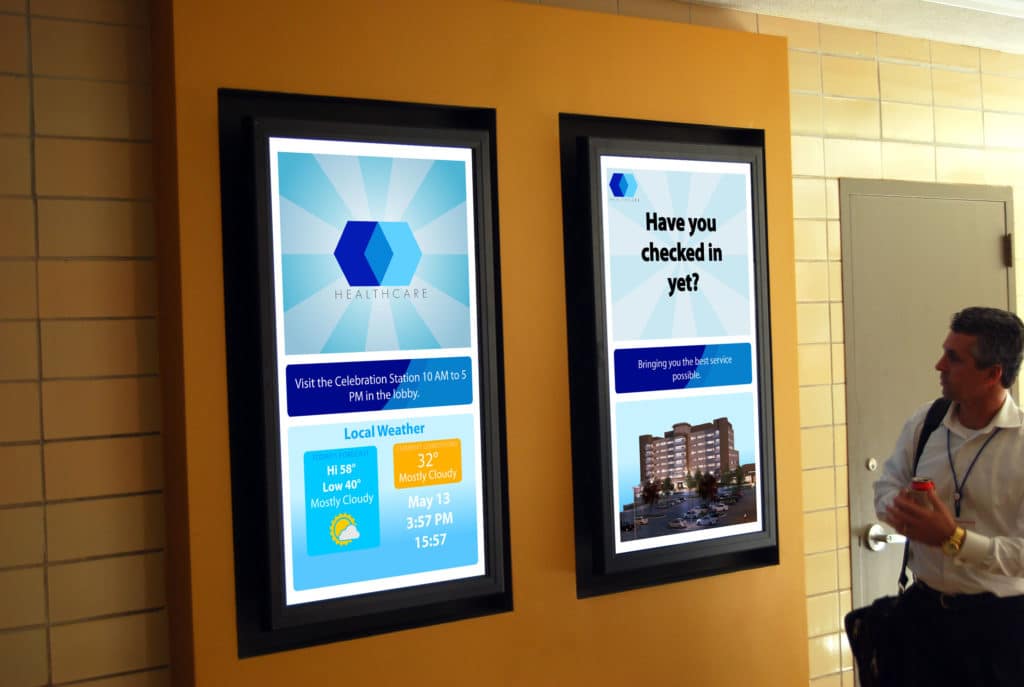Today we ask a question that does not nearly get asked enough…
What makes a successful digital signage network? Or, in the other words, how can you make your digital signage network effective?
Having installed, guided, developed, and quite frankly rescued, hundreds of digital signage networks across various sectors, we have a few ideas on this.
Up to date and relevant content
If anything lets digital signage users down, it’s not updating their content often enough. There’s nothing worse than seeing, for example, an advert for an event or promotional offer that has actually finished. Most of the time, it’s just a case of clients being poorly organised when it comes to scheduling content. But there’s really no excuse for this. On the right platform, users can schedule content days, weeks, even months in advance. We advise content managers to treat their digital signage as just another avenue of marketing. It’s good practice to create a content calendar for your signage. This doesn’t have to be a laborious task. You can sit down for an hour or two and schedule the whole upcoming month’s content.
Another way to ensure you always have up to date and relevant content is through differentiated playlists. It’s a good idea to have general playlists as well as occasional playlists. What we mean by the latter is content specific to certain events, times of the day, days of the week, or times of the year. Intermittently changing your content keeps it fresh and engaging for viewers.
Cloud-based control
The biggest cause for outdated content, the problem identified above, is the use of technology that has to be updated manually. At the worst end of the spectrum, we often encounter the use of USB sticks and PowerPoint. If every time you want to update your content, someone has to create a PowerPoint, save it to a USB, and manually connect it to a screen, it’s easy to see why content deployers can get lazy. Especially if it’s an instance, as we so often come across, where a Head Office is creating content centrally and distributing at a local level to different people. When content pipelines are complicated, a lot can go wrong.
With a cloud-based solution, an entire network of screens can be managed centrally from one online dashboard. Content can be assigned to different playlists and playlists to different media players connected to screens. Any new content created or changed is automatically sent to the media players, ensuring content is always up to date. Going cloud-based is essential if you are managing large networks of displays that are dispersed geographically.
Familiarity with your solution
It goes without saying that the most successful digital signage networks are managed by those familiar with their solution. While there’s nothing necessarily wrong with having one digital signage ‘specialist’ manage your network, we do want to express a word of warning. If only one individual is familiar with the technology, what happens if they leave or go on holiday for a week? This is especially a problem if you are running a complex native solution. It is a good idea to have multiple staff confident on the system, or at least in possession of the login details. If you go with a simple drag-and-drop solution, anyone should feel comfortable jumping on which makes for a far more efficient network. Where training is available, online or in person, it’s also a good idea to have additional team members sit in, even if they don’t usually expect to be directly involved.
Getting the content balance right
One of the trickier elements of managing a digital signage network is getting the right balance of content. All kinds of factors play into this, the ratio of images and videos to text; your own internal content to external, sponsored media; even the split between content created specifically for your signage, and other types of reused media. With all these elements, it’s a case of finding the right balance for you and your audience. A good rule of thumb would be to focus on images and video over text, utilising the visual nature of the medium and internal over external content (at least initially) unless your sponsored media brings great value to your audience.
